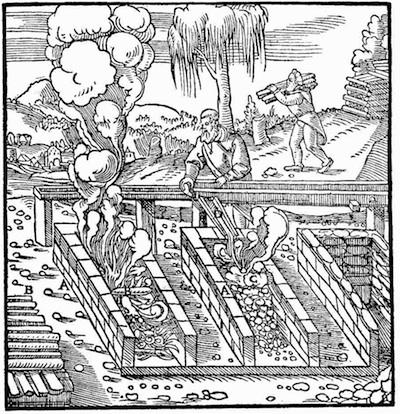GR-KAP (ARVE) at ENAC publishes in NATURE

© 2012 EPFL
NATURE has published work involving ENAC's researchers Prof. Jed Kaplan and Kristen Krumhardt (of ARVE group): 'Natural and anthropogenic variations in methane sources during the past two millennia' (October 2012). Analysis of changes in land use carried out by the ARVE group of the EPFL in Lausanne suggest that the long-term increase in methane concentration over the last two thousand years is caused at least partly by agricultural activities.
The online article published by NATURE is here :
Natural and anthropogenic variations in methane sources during the past two millennia
The official press release by NATURE is here:
Man-made methane emissions back to the Roman period
The past is the key to the future! By analyzing air enclosed in polar ice, the best archive of the atmospheric history, researchers from IMAU, UU, SRON and other international universities discovered that humans caused significant amounts of methane emissions back to the Roman empire period.
Paul Crutzen, the Dutch Nobel Prize winner in chemistry, described the current geological period as the “Anthropocene”, the human era. It starts with the onset of the industrial revolution in the second half of the 19th century when human-related emissions of atmospheric trace gases started increasing strongly. But did it really start then? Since how long do humans influence the composition of the atmosphere? A decade ago, the famous climatologist Ruddiman suggested that humans already influenced the climate much earlier. His hypothesis was criticized, but a few years later isotope measurements of methane trapped in polar ice cores indicated that strong biomass burning, likely related to human activity, increased atmospheric methane levels already before the 16th century. The strength of these isotope measurements is that they allow distinguishing variations in methane emissions from various sources, such as wetlands, ruminants, biomass burning, and fossil fuel use.
Similar analyses have recently been carried out, but at higher temporal resolution and further back in time, at Utrecht University. The results were interpreted with the help of atmospheric models in collaboration with researchers from SRON and international partners. They reveal several distinct periods of increased methane emissions from biomass burning within the last two thousand years. Variations in biomass burning coincided partly with climate variability, but also with changes in human population and land use. For example, the burning-related emissions decreased during the decline of the Roman empire and the Han dynasty, and increased during the population expansion of the Medieval period. Further analysis of changes in land use carried out by the ARVE group of the EPFL in Lausanne suggest that the long-term increase in methane concentration over the last two thousand years is caused at least partly by agricultural activities, thereby providing experimental evidence for the Ruddiman hypothesis.
Learn more via these links:
Follow ARVE activites via the following social network links::